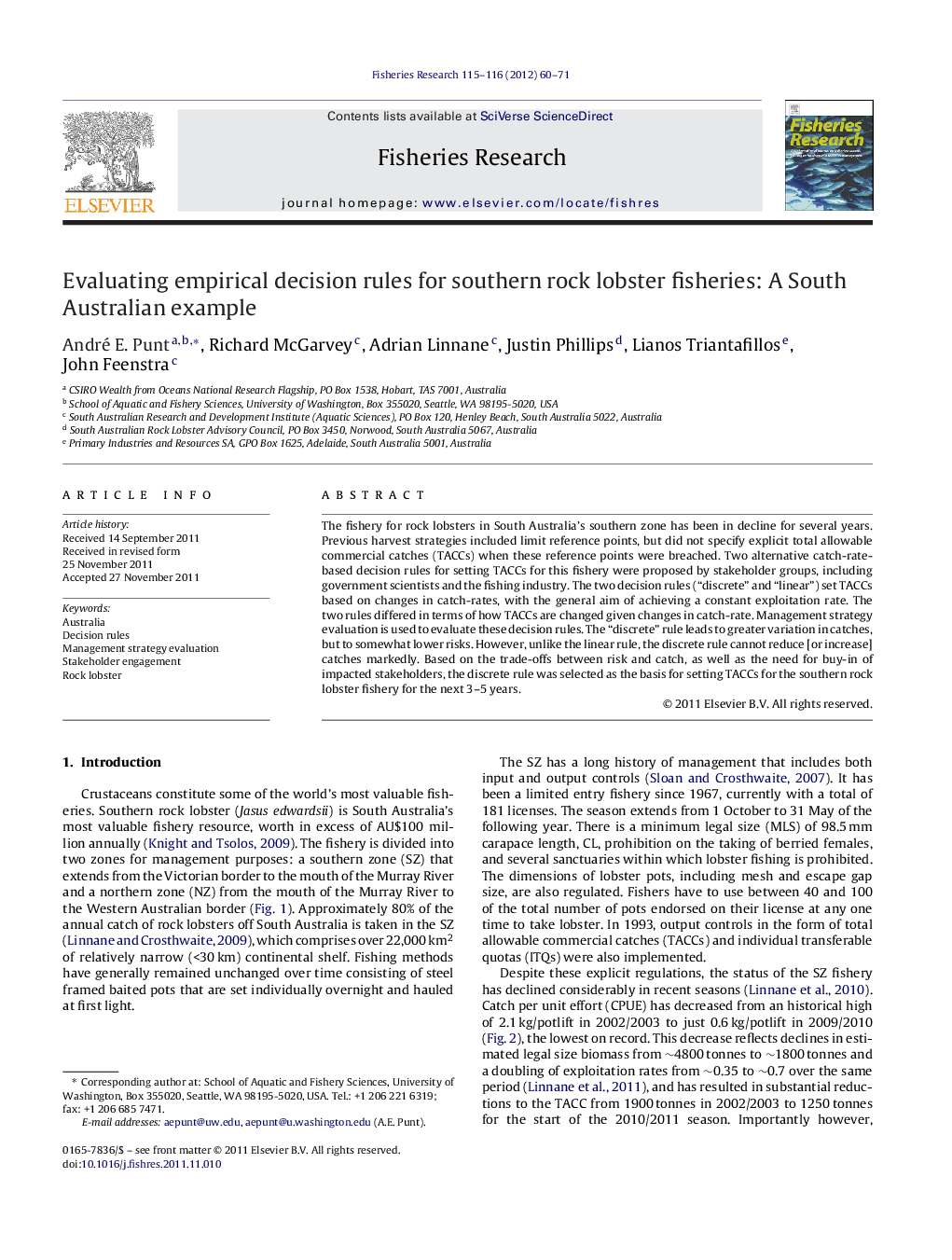| Article ID | Journal | Published Year | Pages | File Type |
|---|---|---|---|---|
| 4543465 | Fisheries Research | 2012 | 12 Pages |
The fishery for rock lobsters in South Australia's southern zone has been in decline for several years. Previous harvest strategies included limit reference points, but did not specify explicit total allowable commercial catches (TACCs) when these reference points were breached. Two alternative catch-rate-based decision rules for setting TACCs for this fishery were proposed by stakeholder groups, including government scientists and the fishing industry. The two decision rules (“discrete” and “linear”) set TACCs based on changes in catch-rates, with the general aim of achieving a constant exploitation rate. The two rules differed in terms of how TACCs are changed given changes in catch-rate. Management strategy evaluation is used to evaluate these decision rules. The “discrete” rule leads to greater variation in catches, but to somewhat lower risks. However, unlike the linear rule, the discrete rule cannot reduce [or increase] catches markedly. Based on the trade-offs between risk and catch, as well as the need for buy-in of impacted stakeholders, the discrete rule was selected as the basis for setting TACCs for the southern rock lobster fishery for the next 3–5 years.
► MSE is used to evaluate decision rules for South Australia's southern zone rock lobster fishery. ► The two empirical decision rules evaluated were proposed by stakeholders. ► The decision rules aimed to keep exploitation rates at desired levels and performed similarly. ► The decision rule proposed by industry was selected for use in the fishery for the next 3–5 years.
